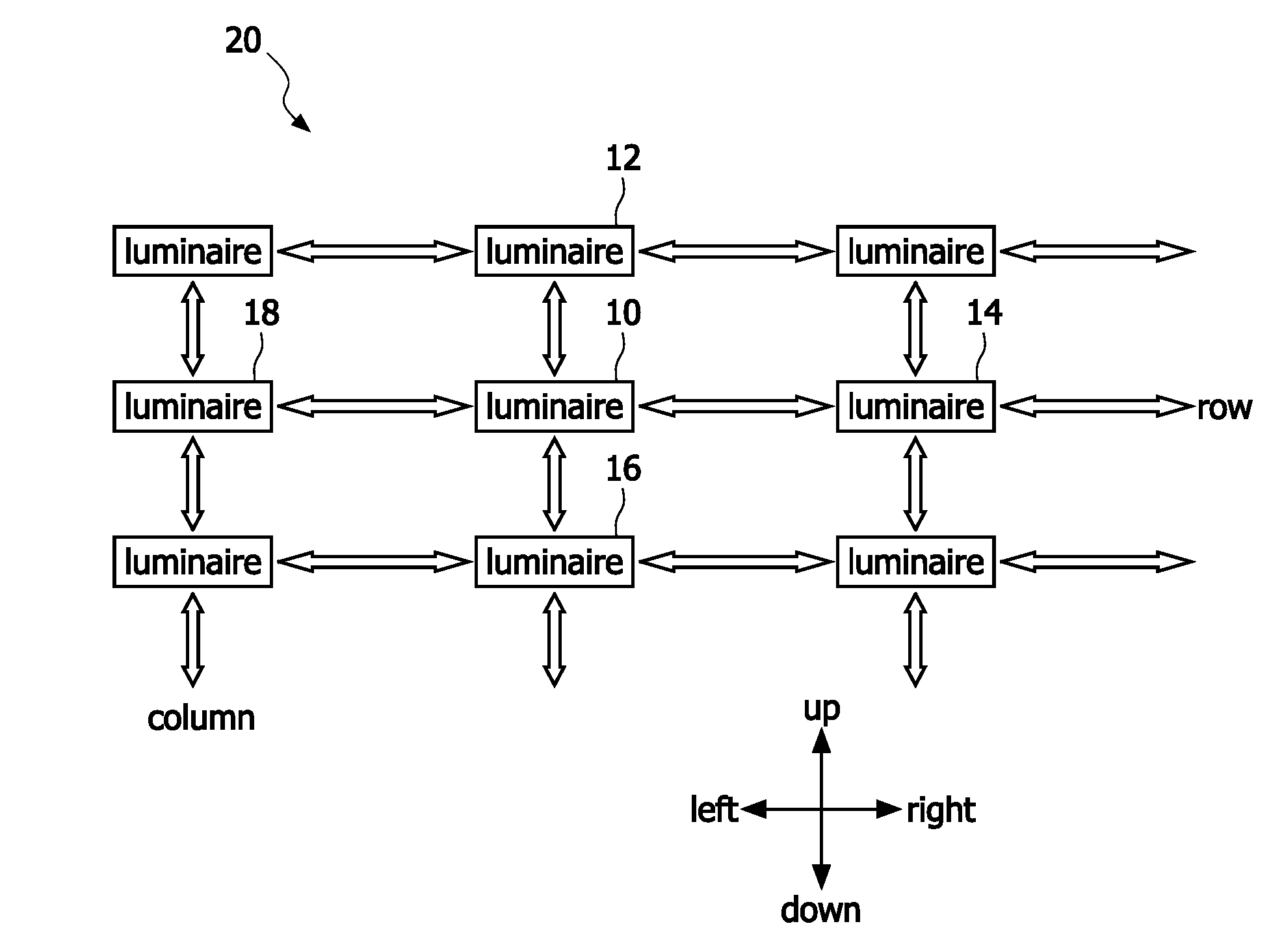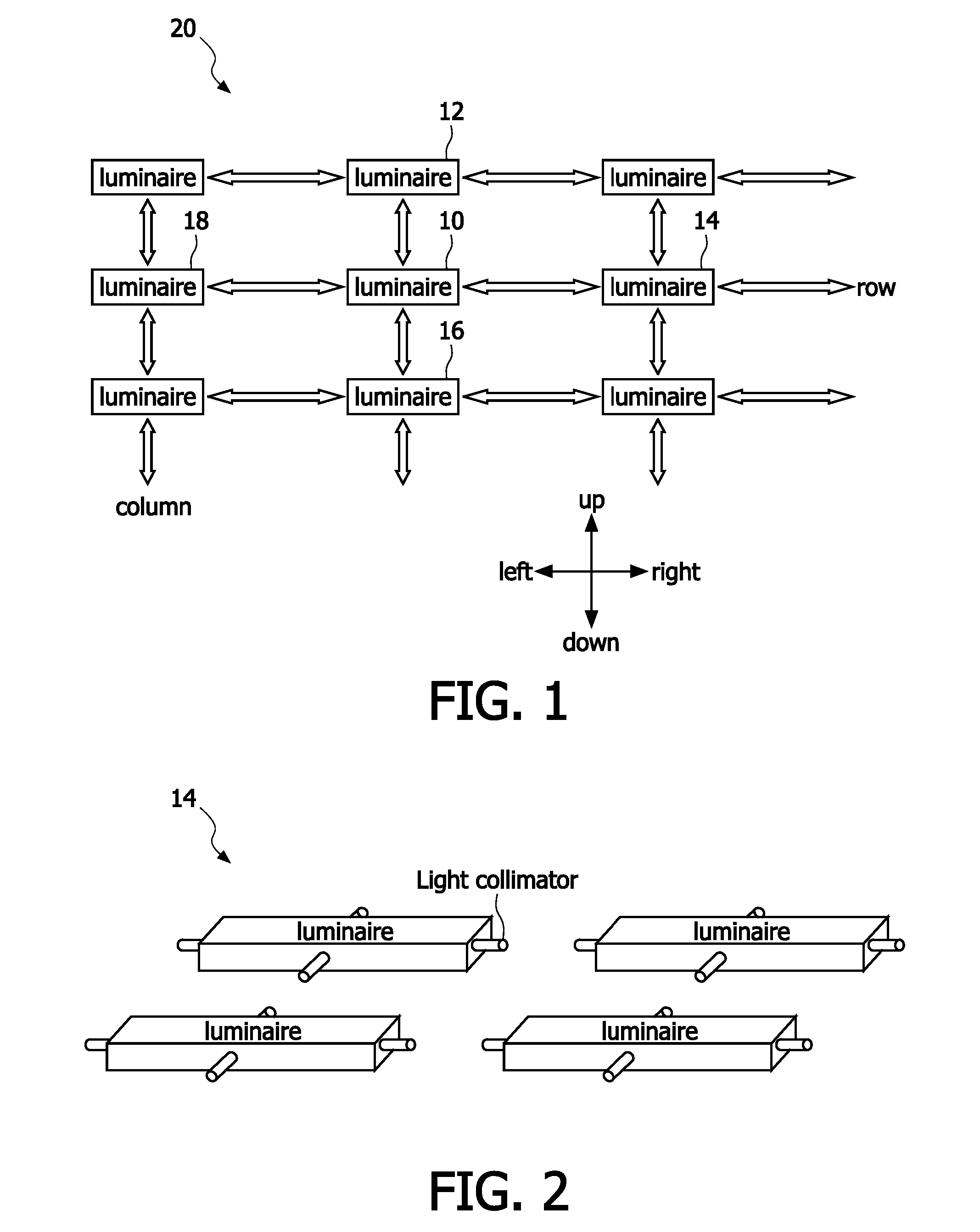Automatically commissioning of devices of a networked control system
a networked control system and automatic commissioning technology, applied in the direction of digital computer details, lighting and heating apparatus, instruments, etc., can solve the problems of cumbersome and error-prone operation, and achieve the effect of avoiding unnecessary routing of commissioning messages through the grid and avoiding loss of commissioning messages due to a faulty nod
- Summary
- Abstract
- Description
- Claims
- Application Information
AI Technical Summary
Benefits of technology
Problems solved by technology
Method used
Image
Examples
Embodiment Construction
[0053]In the following, functionally similar or identical elements may have the same reference numerals. Even if embodiments of the invention, which are described in the following, relate to lighting systems, the invention is generally applicable to networked control systems, which comprise several devices to be commissioned.
[0054]In professional environments it becomes more and more interesting to control lights on an individual and local basis. Examples of such environments are green houses, factory buildings, sport halls, office buildings and outdoor (matrix) light displays. Instead of switching on or off all luminaries, it is preferred to control single luminaries or groups of luminaries in order to locally create light effects in certain areas, for example in order to illuminate certain areas in an office building or to create light for only some plants in a certain place in a green house. Also, often it is required to individually control luminaries of a lighting system with f...
PUM
 Login to View More
Login to View More Abstract
Description
Claims
Application Information
 Login to View More
Login to View More - R&D
- Intellectual Property
- Life Sciences
- Materials
- Tech Scout
- Unparalleled Data Quality
- Higher Quality Content
- 60% Fewer Hallucinations
Browse by: Latest US Patents, China's latest patents, Technical Efficacy Thesaurus, Application Domain, Technology Topic, Popular Technical Reports.
© 2025 PatSnap. All rights reserved.Legal|Privacy policy|Modern Slavery Act Transparency Statement|Sitemap|About US| Contact US: help@patsnap.com



